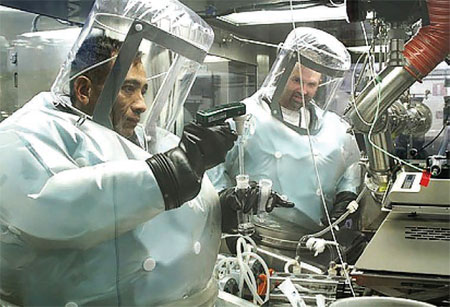Defense spending in Utah creates a huge economic impact for the state, according to a new report from the Kem C. Gardner Policy Institute at the University of Utah. Huge — to the tune of $9 billion and 109,000 direct or indirect jobs, the research shows. The impact on the economic health of the state is about equal to that of the construction industry.
The numbers represent economic activity from the military and other defense activities for 2015, the most recent year for which complete data are available. The study shows federal defense spending accounted for 5.8 percent of Utah’s employment, 7.1 percent of total earnings and 6.2 percent of the state’s gross domestic product — one of the primary indicators used to measure the state’s economic health.
“Utah’s defense industry continues to be an important contributor to the state economy with an impact in every county of the state,” said Juliette Tennert, director of economic and public policy research at the Gardner Policy Institute. While there aren’t as many defense-related jobs statewide as the construction industry, Tennert said the economic impact is about equal, making the sector “just as important” as construction in Utah.
The Utah Defense Alliance and the Utah Department of Veterans and Military Affairs commissioned the Gardner Policy Institute to assess the economic impacts of Utah’s defense industry. The institute analyzed the impacts of current operations of Hill Air Force Base, Dugway Proving Ground, Tooele Army Depot, the Utah National Guard, reserves, recruiting, ROTC and expenditures on behalf of veterans. It also examined Department of Defense and Department of Veterans Affairs grants and contract expenditures that were not associated with one of the studied installations.
In addition, the Gardner Policy Institute modeled the long-run economic and demographic impacts on the state and local economies in the event of the closure of Hill Air Force Base, for which there are currently no known plans. The base accounts for 43 percent to 50 percent of the total defense industry economic impact in the state, supporting over 47,000 jobs and $4.5 billion in GDP. A hypothetical closure of Hill Air Force Base by 2022 would cost the state an estimated 35,184 jobs, $2.9 billion in earnings and $3.8 billion in GDP.
“With the Trump administration’s recent proposals to increase defense spending, this could mean additional money and jobs for Utahns,” Tennert said. “If there are additional investments in defense as a whole, Utah is well-positioned for those (economic) impacts to grow.” Tennert also said that the state would have a competitive advantage due in part to the state’s strong aerospace sector. Increased defense spending would “play well” in Utah, she said.
The Governor”s Office of Economic Development weighed in on the importance of defense spending. “This sophisticated industry strengthens our diverse economy and provides a robust infrastructure statewide,” said GOED executive director Val Hale. “As it continues to grow, Utahns benefit from highly skilled job opportunities.”
Veterans in Utah also generated significant economic impact, supporting over 24,000 jobs and $1.9 billion in GDP for Utah in 2015. Veterans Affairs and Department of Defense spending for Utah veterans was $1.8 billion in 2015.
The full report is available at http://gardner.utah.edu/wp-cotent/uploads/DefenseReportFinal.pdf.








